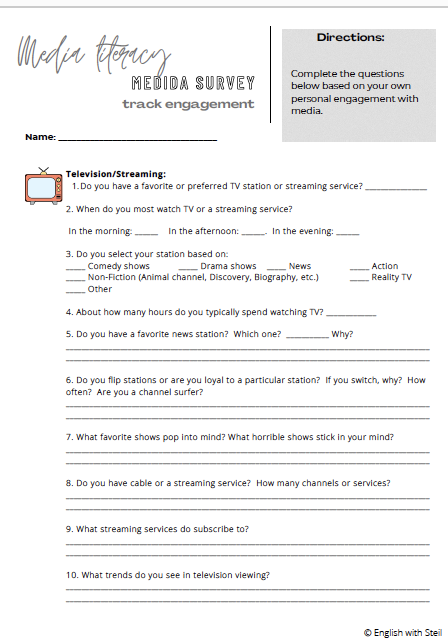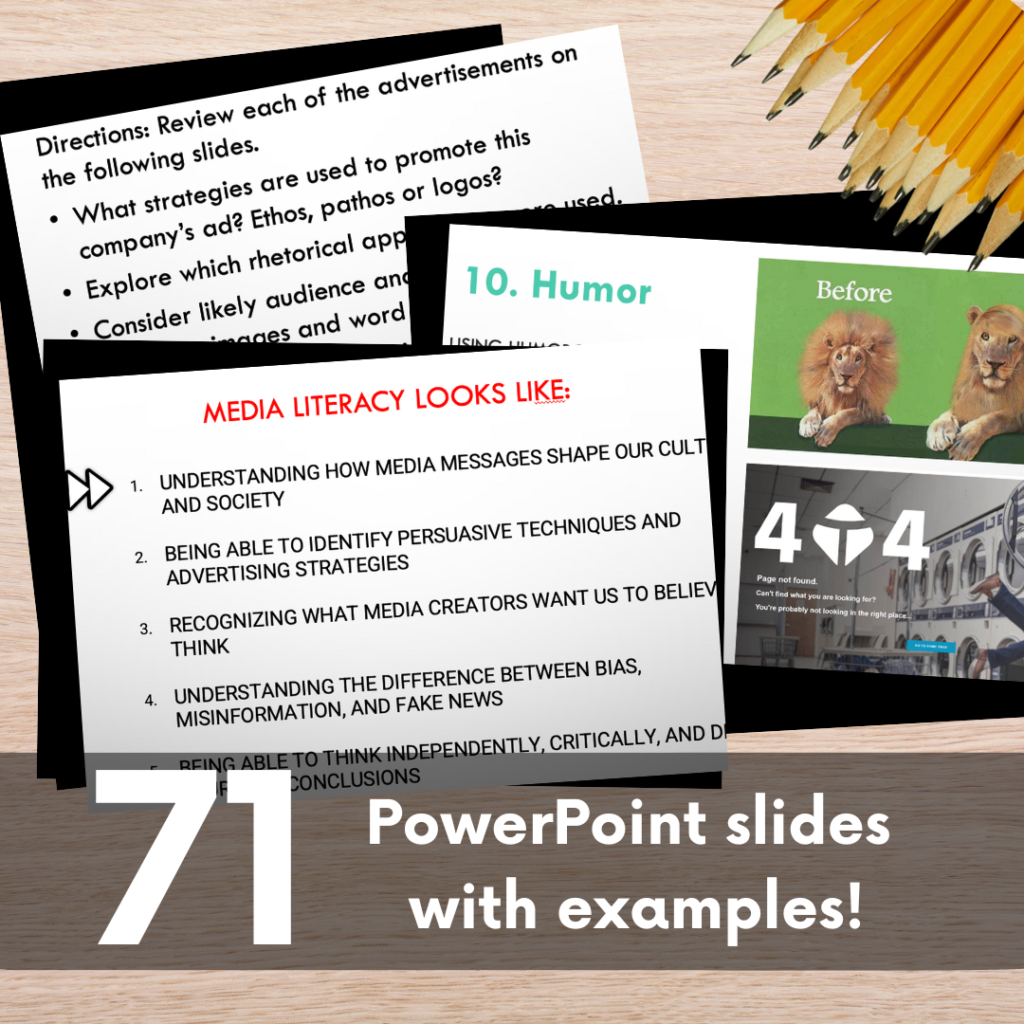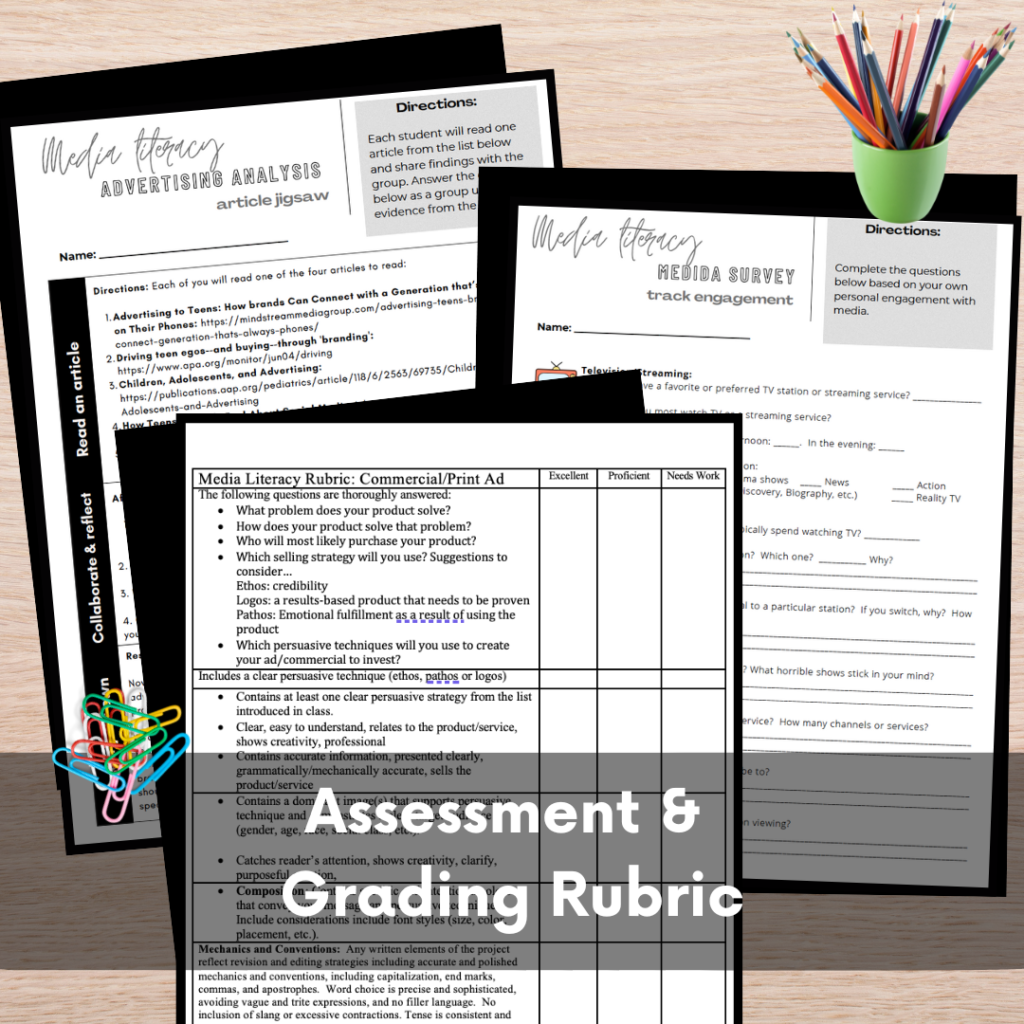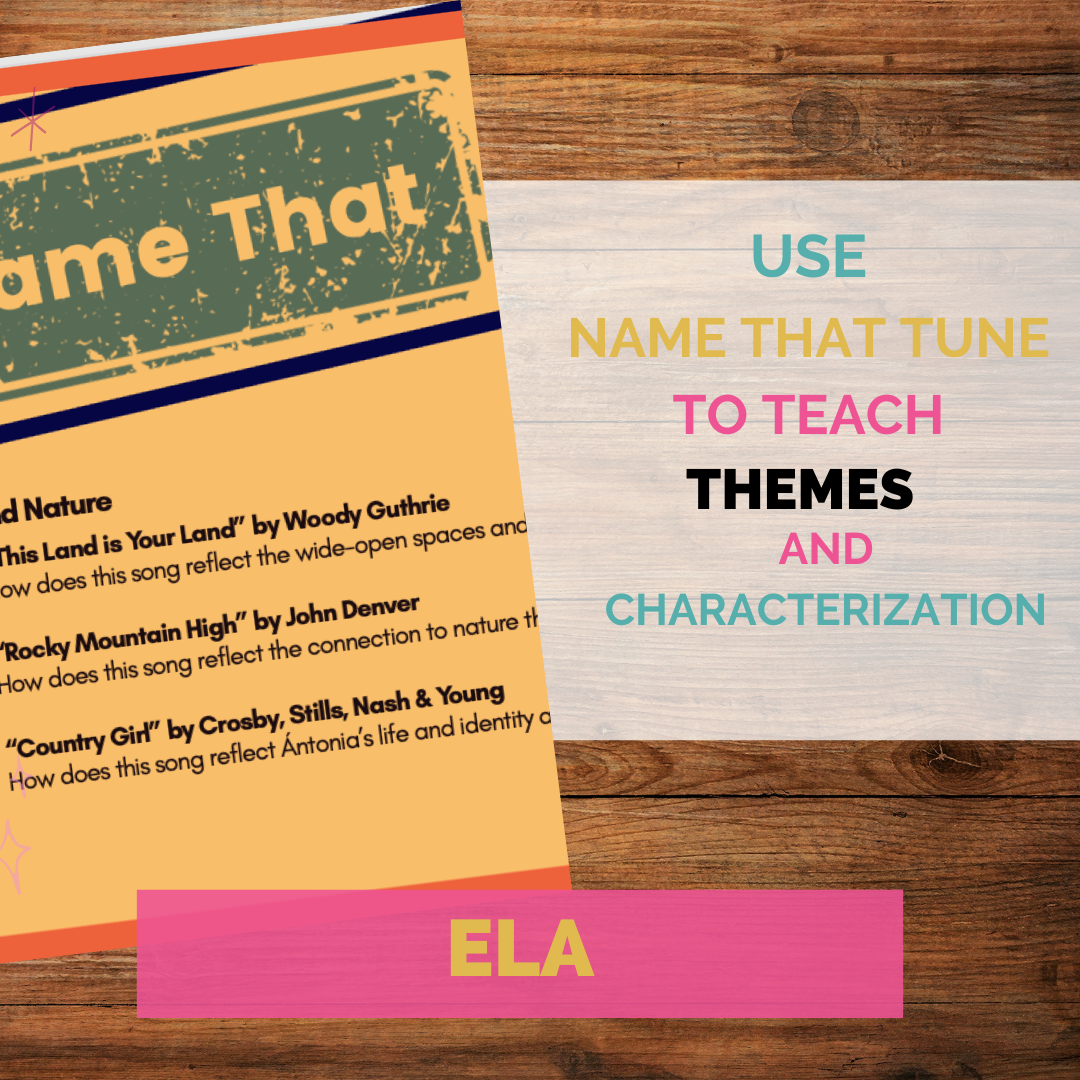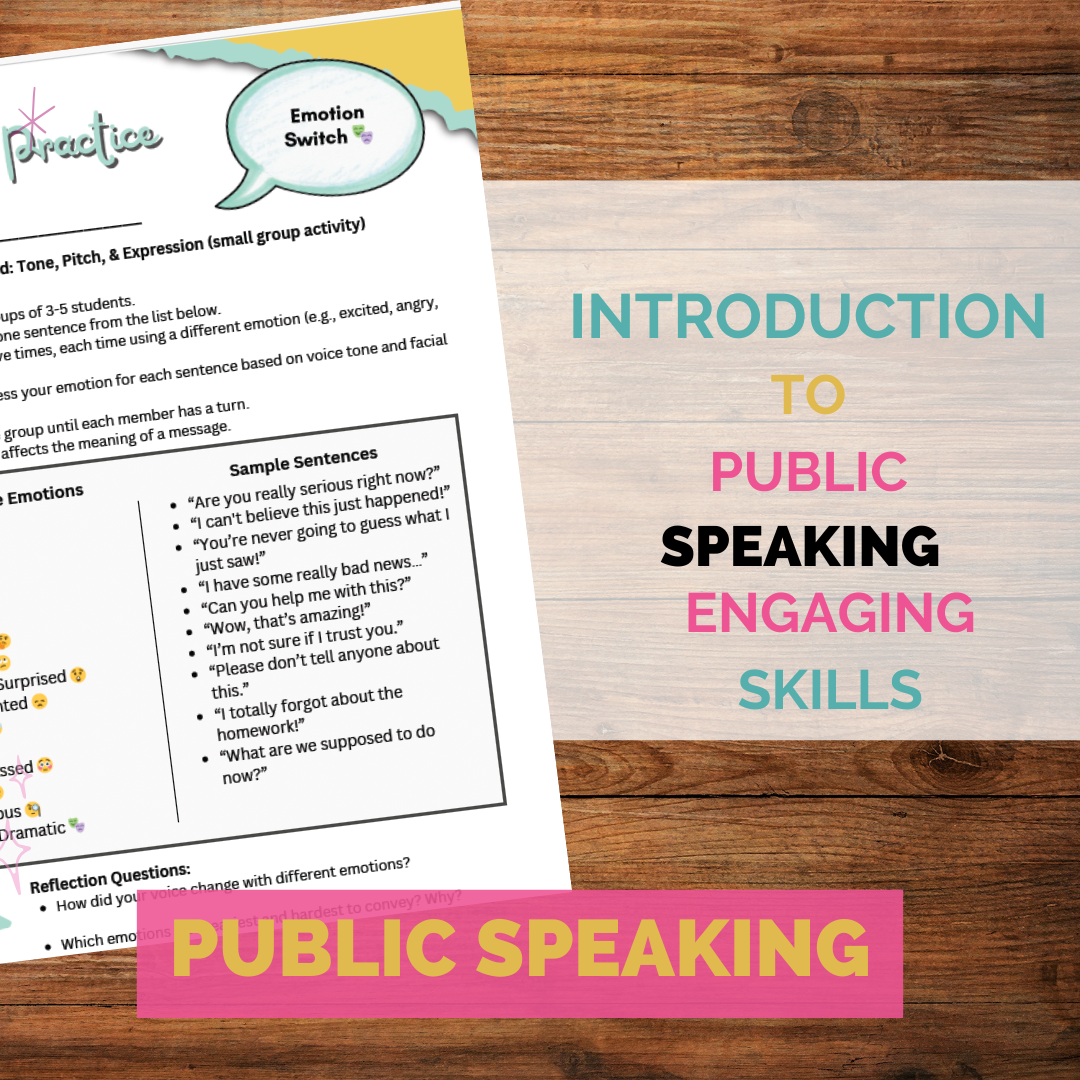As the school year progresses, it becomes increasingly important to equip our students with the skills they need to navigate the media-saturated world around them. Recently, I taught a comprehensive media literacy unit in my class, focusing on helping students understand how advertisers target them, recognize common rhetorical strategies, and analyze both print and commercial advertisements. Here’s a look at how I teach this unit and the insights I’ve gained along the way.
In today’s world, our students are bombarded with countless messages from various media sources, making it more important than ever for them to develop strong media literacy skills. Recently, I had the opportunity to teach a comprehensive media literacy unit in my class, and I wanted to share my experience and insights with you. This unit focuses on helping students understand how advertisers target them, recognize common rhetorical strategies, and analyze both print and commercial advertisements.
Why Media Literacy is Crucial
With so many messages aimed at teens, it’s vital for them to discern the intentions behind these advertisements and understand how they can be influenced. Media literacy empowers students to critically evaluate the content they encounter, fostering informed and thoughtful consumers.
Tips and Ideas for Teaching Advertising Strategies and Media Literacy
1. Encourage Discussion
Foster an open classroom environment where students feel comfortable sharing their thoughts and opinions. Media literacy is all about questioning and analyzing, so the more students discuss, the better.
2. Use Real-World Examples
Incorporate current advertisements that students are likely familiar with. This makes the lessons more relevant and engaging. Discussing ads from their favorite brands or recent commercials they’ve seen can spark interest and deeper understanding.
3. Interactive Activities
Hands-on activities like the media consumption journal and color analysis worksheet help students connect theory to practice. Interactive elements keep students engaged and make the learning process more dynamic.
4. Collaborative Learning
Group activities like the advertising articles jigsaw promote teamwork and allow students to learn from each other. Collaborative learning can help students see different perspectives and enhance their analytical skills.
5. Creative Assignments
The final project to create an ad encourages students to synthesize their learning and apply it in a fun and innovative way. Allowing students to present their projects to the class can also build confidence and public speaking skills.
6. Reflect on Personal Media Use
Have students reflect on their own media consumption through surveys or journals. Discuss how different types of media influence their thoughts and behaviors, helping them become more aware and critical consumers.
7. Integrate Technology
Utilize digital tools and online resources to analyze advertisements. There are numerous websites and apps that can help students create and critique media content, making the learning experience more interactive and modern.
Why Media Literacy is Crucial
With so many messages aimed at teens, it’s vital for them to discern the intentions behind these advertisements and understand how they can be influenced. Media literacy empowers students to critically evaluate the content they encounter, fostering informed and thoughtful consumers.
How I Structure the Unit
This media literacy unit is designed to engage students through lessons, discussions, and hands-on activities. Here’s a step-by-step breakdown of how I teach this unit in my classroom:
1. Introduction to Media Literacy and Advertising Strategies
I start with a PowerPoint presentation that introduces the basics of media literacy and advertising strategies. This presentation covers:
- What is Media Literacy: Understanding the concept and its importance.
- Process of Media Literacy: Steps involved in analyzing media messages.
- Analysis of Print and Commercial Ads: We examine three print ads and five commercial ads, discussing the techniques used and their effectiveness.
To make this engaging, I use real-world examples that are relevant to my students’ interests. We discuss current advertisements they’ve seen and analyze them together, which helps them connect theory to practice right from the start.
2. Rhetorical Strategies and Advertising Techniques
Next, we dive into rhetorical strategies using another PowerPoint presentation. This lesson introduces students to:
- Ethos, Pathos, and Logos: The fundamental rhetorical appeals.
- 25 Additional Common Advertising Strategies: Techniques like glittering generalities, traditional wisdom, snob appeal, and more.
I provide students with a note-taking worksheet to track the presentation. This not only helps them follow along but also serves as a valuable study tool. I encourage them to think of examples from advertisements they’ve encountered and discuss how these strategies are used.
3. Print Ad Analysis
Analyzing print advertisements is always a highlight. Here’s how we tackle this:
- Over 18 Full-Color Print Ads: We work through these ads using question prompts. This can be done as a large group activity or in small groups.
- Exploring Print Advertisements Worksheet: This supplemental activity extends their learning and encourages independent analysis.
I often split the class into small groups for this activity. Each group receives a set of print ads and discussion prompts. After analyzing the ads, groups share their findings with the class, promoting collaboration and diverse perspectives.

Additional Activities and Resources
Ad Phrases Quiz
I kick off some lessons with an ad phrases quiz to test students’ knowledge of popular advertising slogans. It’s a fun and engaging way to start the class and gets them thinking about the power of slogans in advertising.
Advertising Articles Jigsaw
Students read and discuss current articles on the impact of advertising on teens. This jigsaw activity promotes critical thinking and collaborative learning. Each group reads a different article and then teaches the main points to their peers.
Media Consumption Survey/Journal
Students track their media consumption, which leads to eye-opening discussions about their media habits. This activity helps them become more aware of how much media they consume and the types of messages they’re exposed to.
Color Analysis Worksheet Activity
Using a provided link, students analyze how color influences perception in advertisements. This activity helps them understand the subtleties of visual rhetoric and how color can shape emotions and opinions.
Print Ads Analysis Worksheet
Further reinforcing their skills, this worksheet provides additional practice in analyzing print advertisements. It’s a great homework assignment that prepares them for the final project.

